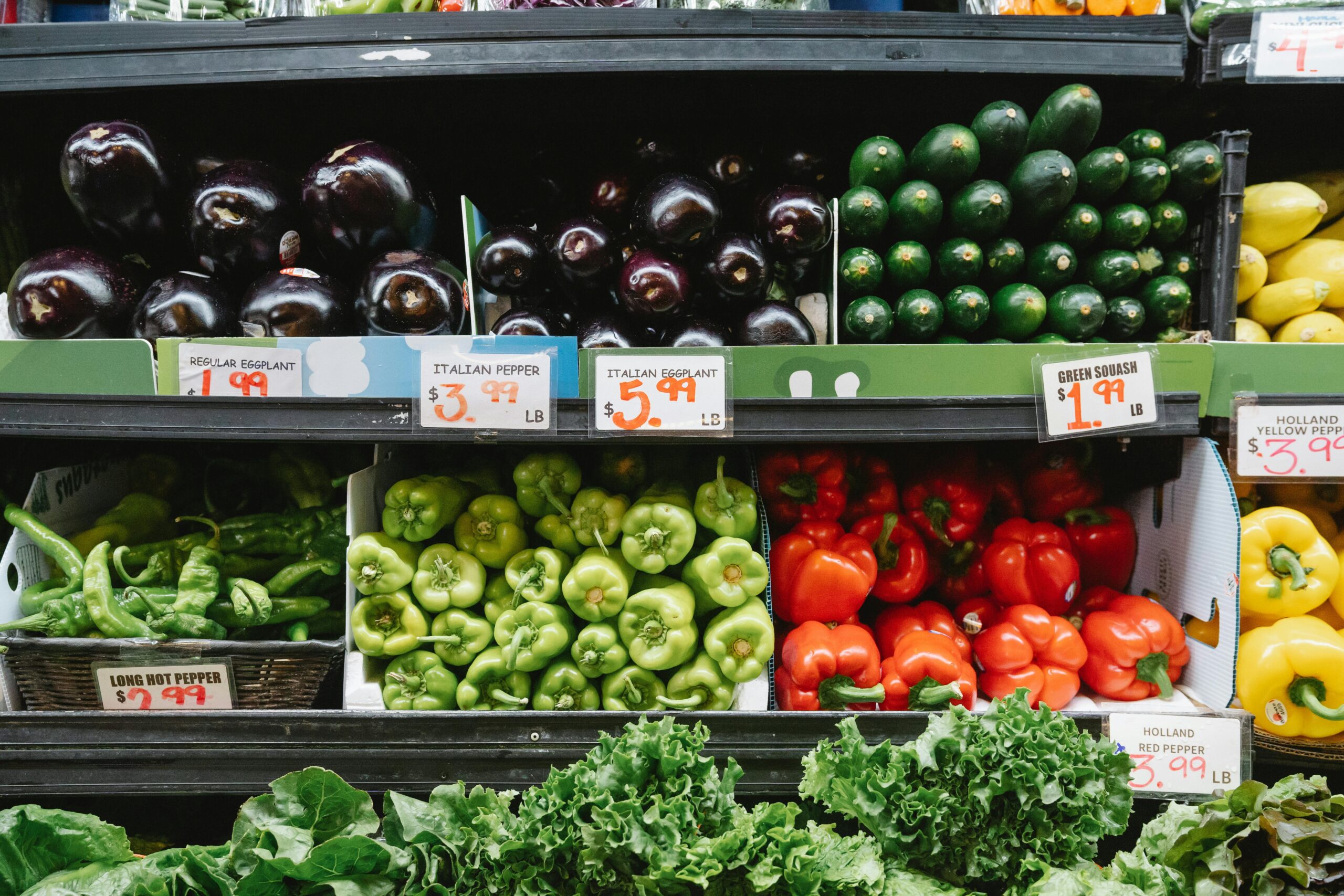
In the first winter days of 2025, there is a flurry of New Year’s Resolutions, gym memberships, and self-care choices. It’s a time of new beginnings and building new habits for many people. Do you have any nutrition related goals this year? What about a goal to add new seasonal veggies to your menus? There are many delicious vegetables packed with nutrition that are readily available and in season during the winter. Since these vegetables are grown and harvested during the colder season, these winter veggies can be more flavorful and budget friendly. Foods in season travel fewer miles from farm to market which is better for the environment and more sustainable for our planet. Let’s explore.
Winter vegetables can be grouped into four general categories:
- Cruciferous vegetables: Broccoli, Brussels sprouts, cabbage (green and red), and cauliflower
- Leafy greens: Collard greens, kale, mustard greens, and Swiss chard
- Winter squash: Butternut squash, acorn squash, spaghetti squash, delicata squash, pumpkin
- Root vegetables: Beets, carrots, garlic, onions, parsnips, potatoes, and turnips
If you are short on time or energy to cook, you don’t have to prepare these vegetables from scratch. In the frozen foods department, there are pans of vegetables ready to roast as well as pre-cubed squash. Try some pickled beets and carrots that make great garnishes straight from the jar. You can buy a bag of salad with baby kale, red cabbage, and sliced Brussels sprouts that you can rinse and stir into a stew or toss with your favorite salad dressing. Add some canned sliced carrots, garlic powder, and frozen diced onions to a can of beans or chicken soup to punch up the nutrients and flavors. The possibilities are endless!
Here are some more cooking suggestions for some of my favorite winter vegetables:
Cruciferous Delights
Cruciferous veggies that grow in heads can have strong, sulfur-like flavors. But if you mix the veggies with sauces, herbs, spices, and drizzles of vegetable oil, you can emphasize other flavors that are very pleasing in these winter plants. Also, roasting these veg-delights brings out an almost caramel flavor that works well with other winter treats too. See some tasty recipes like Roasted Brussel Sprouts with Squash and Cranberries, Cauliflower Steaks, Tofu with Broccoli, Creamy Garlic Mashed Cauliflower, and Roasted Cabbage.
Leafy Greens
Fresh leafy greens available in the winter months are very versatile. You can eat them in a salad; serve them as a side dish to an entrée; add them as a topping on pizzas; bake in cornbread; make veggie chips; or add them to soups, stews and pasta. If you have a favorite soup, add some chopped kale along with other winter vegetables such as potatoes, carrots and onions. Instead of rice or tortillas, line a bowl with trimmed kale and then spoon on tasty Tex-Mex ingredients for a lower-calorie entrée.
Winter Squash for Meatless Main Dishes
Butternut squash, acorn squash and pumpkin make wonderful meat substitutes or a flavorful side dish. They can be sliced at home to ½ inch cubes or purchased pre-cut and ready-to-cook. Sauté the cubes with oil and fragrant spices in a skillet or roast in the oven then add other ingredients to make a meatless entrée like chili, curry, quinoa or pasta bowl, or an enchilada skillet. Sprinkle chopped nuts and toasted pumpkin seeds on yogurt for a taste explosion. Read more about winter quash or try this Sweet and Spicy Roasted Squash Trio Recipe.
Easy Winter Root Vegetable Medley—Recipe
Enjoy a mix of root vegetables with this simple recipe. Peel and cut beets, carrots, onions and turnips into chunks, about ¼ inch thick. Preheat oven to 425 degrees. Spread vegetable pieces on a cookie sheet lined with parchment paper or non-stick aluminum foil. Drizzle with your favorite oil. Sprinkle herbs and spices like black pepper, garlic powder, paprika, salt, and/or thyme. Stir until well coated. Roast for 20 to 30 minutes, turning halfway for even browning.
Don’t let the winter months go by without trying some in-season vegetables. Seasonal vegetables are fresh, packed with flavors, and boost your nutrient intake. These are often considered comfort foods on colder days for a reason! Not sure which vegetables are in season in your area? The Seasonal Food Guide is a great place to find seasonal produce available by months in your geographical area or community.
Through LLS’s Nutrition Education Services Center patients and caregivers of all cancer types can receive a free nutrition consultation with a registered dietitian who has expertise in oncology nutrition.
LLS Resources
Powerful, Immune-Boosting Nutrients

Thanks for the information
PLEASE EMAIL ME THE INFORMATION MY DAUGHTER ELIZABETH ALDANA IS GOING THROUGH TEST
CANCER IN THE UTEROUS SHES BLEEDING WEAK CANT EAT LOSS ALOT OF WEIGHT
IS THERE ANY SPECIALIST YOU RECOMMEND
Thank you for your comment! You can schedule a one-on-one consultation with one of our Registered Dietitians at http://www.lls.org/consult. We look forward to speaking with you!